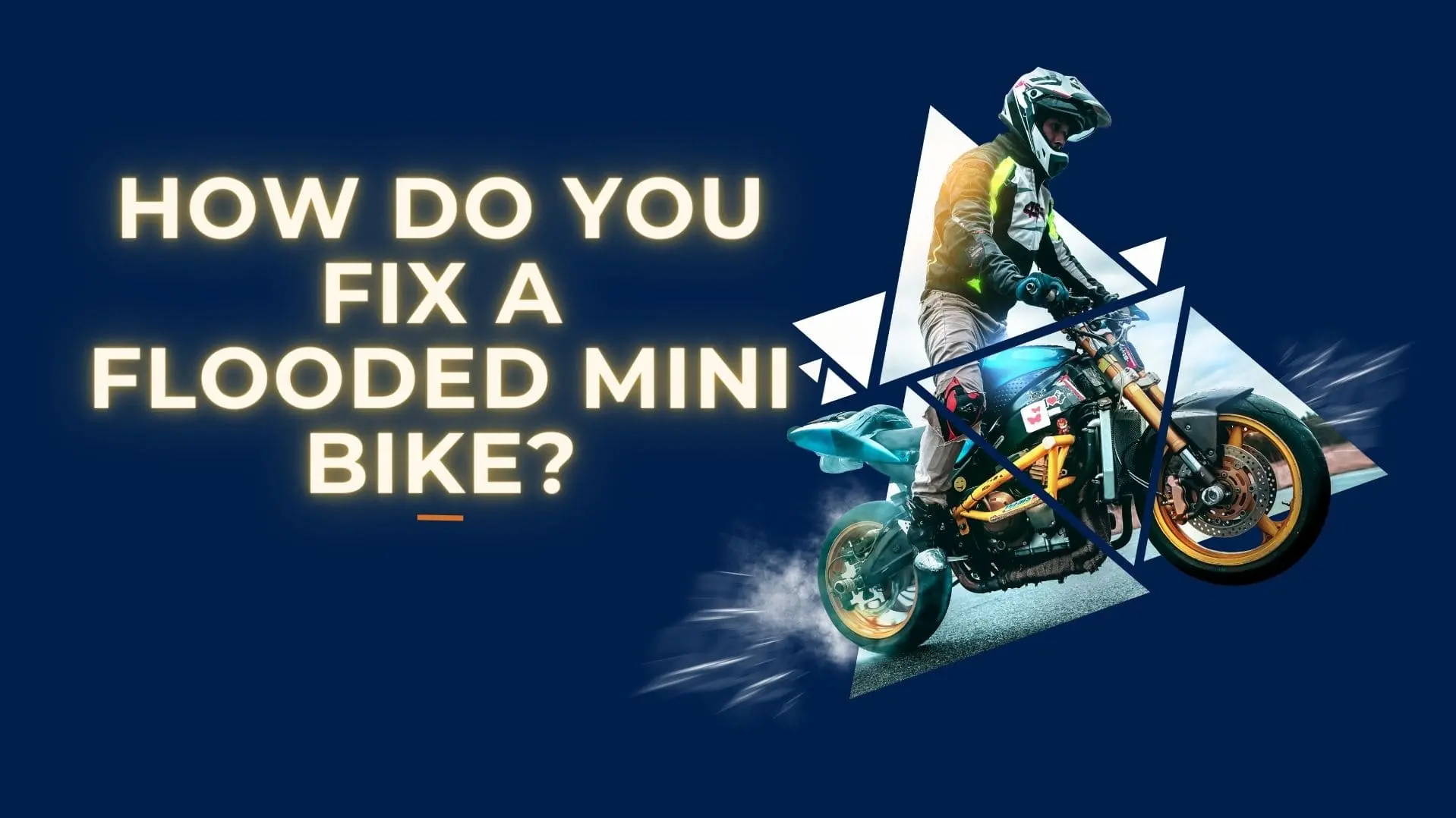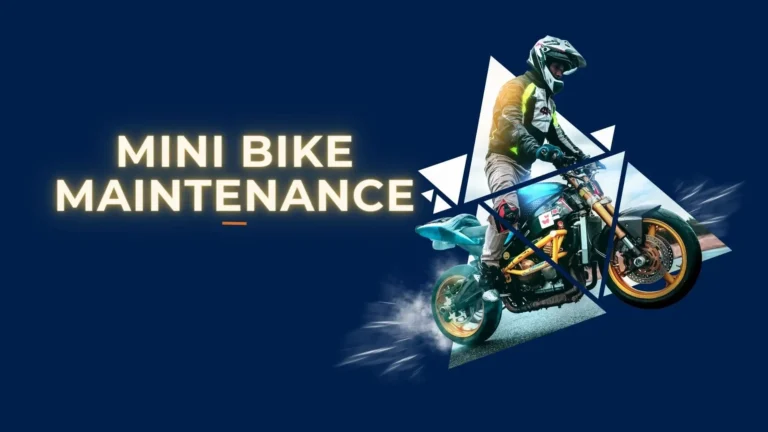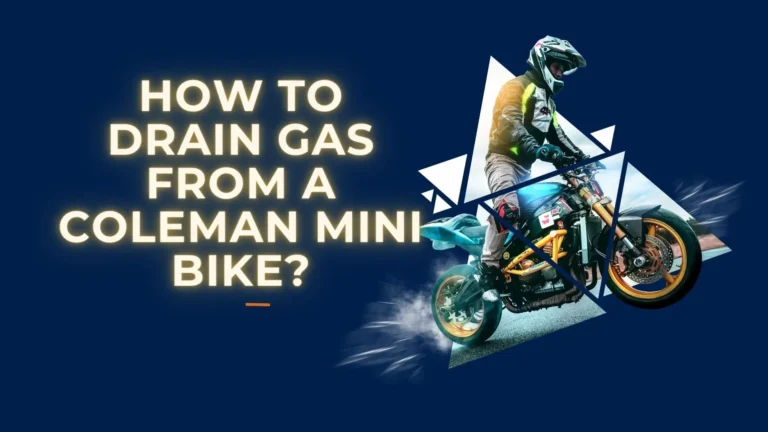How Do You Fix a Flooded Mini Bike?
Turn off the fuel, remove the spark plug to allow the engine to dry out, drain any excess fuel, and kick start the engine to clear remaining gas before reinstalling the spark plug and attempting to restart.
Riding mini bikes is awesome. Feeling the wind and hearing the engine run smoothly is the best. But when your bike floods, the fun stops fast. Do not worry though. With some simple checks, you can fix many flooding problems yourself.
Flooding happens when too much gas gets into the carburetor. Here is what leads to the issue most times:
- Stuck floats fail to cut off gas flow into the carburetor
- Dirt and pieces block the fuel inlet so floats cannot seal off fuel
- Broken fuel lines or tubes let gas leak in
To help avoid flooding:
- Clean the carburetor bowls regularly
- Check float height settings
- Replace worn out gaskets and seals
- Use a fuel filter in the gas line
- Make sure vent tubes are open
When the bike still floods, do not fret. Step-by-step troubleshooting will find the culprit. Key things to examine are:
- Float adjustments
- Objects blocking fuel jets
- Bad gaskets allowing leaks
- Clogged vent tubes
Stay calm and check each part. With some tinkering, you can get your mini bike humming again.
Key Takeaways
- Flooding happens when too much gas gets into the carburetor from issues like stuck floats, clogged fuel inlets, or damaged fuel system components.
- Regular maintenance like cleaning the carburetor bowls, checking float adjustments, and replacing worn gaskets can help prevent flooding.
- When flooding occurs, troubleshooting involves turning off the fuel, removing the spark plug to dry out the engine, draining excess fuel, and kick starting to clear out remaining gas.
- If flooding persists, further diagnosis and carburetor removal is needed to inspect components and clear any debris clogs, replace damaged gaskets, or consider adding a fuel filter.
What Causes Flooding
A few main problems let too much fuel into the carburetor, flooding the engine:
- Stuck floats. Floats regulate carburetor fuel levels. When stuck, fuel keeps entering and overwhelms the engine.
- Clogged fuel inlet. The inlet valve seals when floats rise. Debris buildup prevents full sealing, allowing influx past floats.
- Damaged fuel system. Cracked lines and kinked vent tubes give fuel other ways in, bypassing seals and gaskets.
Stuck Floats
Inside carburetors, floats maintain optimum fuel for engine needs. They rise and fall with gas levels – up closes the inlet valve, down opens it. If sticky gas or particles prevent floats from descending, the inlet stays open. Fuel keeps filling until the engine floods from excess.
Debris Blocking Inlet
Dust, plastic fragments, other grit – when trapped at the inlet valve, debris stops it fully sealing. So fuel leaks past continuously, unchecked by floats. Soon it overwhelms seals, gaskets, overflowing the engine.
Leaky Fuel Lines
Cracked lines seem harmless but let fuel stream or drip right into engine areas not meant to be wet. Kinked vent tubes also pressurize the system. They cannot equalize properly. Extra pressure forces gas past seals – another flooding starter.
Keeping Flooding at Bay
An ounce of prevention is worth a pound of cure. Some simple maintenance routines greatly reduce flooding risks:
- Clean carburetor bowls regularly to prevent residue buildup from blocking fuel system components.
- Check float height adjustments to ensure floats can move freely to open/close fuel flow.
- Replace worn gaskets & seals to prevent fuel seeping past into unintended areas.
- Install inline fuel filters to capture contaminants before they enter and clog the carburetor.
- Keep vent tubes clear so pressure equalization happens smoothly without forcing fuel past seals.
Clean Carburetor Bowls
Letting carburetor bowls accumulate varnish or debris over time is inviting flooding disasters. After a few monthly rides, remove and spray bowls clean. Ensure all fuel jets and needle valves are free of particles, reassembling properly.
Check Float Adjustments
Floats must move freely to accurately maintain fuel levels. If set too high, they cannot stop inlet flow in time. Too low and levels run dry. Gauge adjustability and check settings as part of routine carburetor cleaning.
Replace Worn Seals
Seals and gaskets harden and crack over time. Even slight deterioration here allows pressurized fuel to leak to vulnerable areas. Replace them proactively alongside other maintenance for worry-free riding.
Install Fuel Filters
Fuel contamination is a leading flooding catalyst as particles choke passages. Adding an inline filter catches debris, keeping the carburetor clean for optimal float control of flow. Change clogged units out promptly.
Keep Vent Tubes Clear
Blocking the thin vent tubes has an outsized impact. Kinked lines cause pressure differentials across seals from fuel level changes. The pressure presses past worn gaskets causing leaks. Prevent kinks and particles blocking vent lines.
Staying Safe with Flooded Engines
Working with flooded motors requires great care. As a seasoned mechanic, I strongly advise these vital precautions:
- Allow the engine to fully cool before servicing – gas fumes and hot engines never mix well.
- Use protective equipment like gloves and goggles – fuel residues can irritate skin and eyes.
- Work only in a well-ventilated area – dissipating fumes rapidly is critical.
Let it Cool
According to most shop manuals, temperatures exceeding 100°F near fuel sources often prove hazardous. Fuel vapors and surface deposits flash easier under excessive heat. I’d recommend waiting until the engine cools below 100°F before approaching the motorcycle. Rushing in while hot significantly elevates safety risks.
Protect Yourself
In my experience, fuel leftovers clinging around flooded engines can irritate skin and eyes quite badly. I suggest wearing gloves to keep hands from direct contact. Also use proper eye goggles – not just glasses – when performing close servicing. Good technique minimizes exposure already. Further gear protects against incidental splashes or vapors.
Ensure Air Flow
Fumes from excess gas accumulate readily while fixing flooding issues. Proper ventilation as a universal rule is vital here. I advise working outdoors or in large garages with doors open. Position fans if needed to displace lingering gasses. Limit environmental ignition sources completely. Let breezes circulate fumes away, preserving air quality for safe troubleshooting.
Getting Back On Track
When flooding persists, methodically work through these key troubleshooting steps:
- Turn fuel supply off – Prevent more gas entering the flooded engine.
- Remove spark plug – Allows evaporation of excess fuel from the combustion chamber.
- Check/replace fouled plug – Ensure the spark plug is clean and functioning.
- Drain excess fuel – Empty extra gas from the airbox and exhaust if possible.
- Kick start the engine – Helps clear any remaining pooled fuel.
- Reinstall spark plug – With fuel valve back on, a kicked over engine should ignite.
Cut Off The Fuel
As a first response, locate and rotate the fuel petcock to the OFF position. This stops additional gas entering the already flooded chambers. Preventing further influx minimizes work needing done.
Remove & Check Spark Plug
Unscrew and take out the spark plug completely. This opens the combustion area to evaporate any gas pooled here. Let the engine sit for 10-15 minutes to evaporate before checking plug foulness. Clean off any fuel residues or replace with a properly gapped new plug.
Drain Extra Fuel
Tilt the bike to drain fuel puddles through the airbox and exhaust vents. Rotating the kickstart can help discharge pockets. Removing excess fuel quickens evaporative drying before restarting. Take drainage precautions – use a catch pan to avoid environmental spills.
Kick It Over & Relight
With ignition cut off, rapidly kick start the engine to clear any lingering fuel inside before reinstalling the spark plug. Once back in place, return the fuel valve to on. Then kickstart with full throttle as needed to restart the engine. Be prepared to repeat kick pumping until ignited.
When Flooding Persists
If flooding continues despite previous steps, further diagnosis and carburetor servicing is needed:
- Remove and inspect carburetor – Take out and closely examine bowls, floats, inlet needle and seats for faults.
- Check float height setting – Improper levels prevent accurate fuel flow shutoff.
- Clear any debris clogs – Stuck grit keeps inlet needles from sealing.
- Replace damaged gaskets – Cracks let fuel leak past seals.
- Consider adding a fuel filter – Filters stop contaminants entering the fuel system.
Remove and Inspect Carburetor
Take the carburetor fully out of the motorcycle. Then systematically disassemble bowls, floats, needles, seats, jets and inspect for:
- Float deformities preventing free motion
- Needle valves sealing properly
- Jet obstructions inhibiting fuel draw
- Bowl residues clogging passages
- Damaged O-rings and gaskets
Thoroughly clean or replace components to restore smooth flowing carburetor function.
Check Float Heights
With the carburetor disassembly, use calipers to confirm float heights match manufacturing specifications. If riding elevation varies from coastal levels, adjustment is likely needed for accurate leveling.
Replace Gaskets & Add Filters
Reinstall the carburetor with new gaskets to ensure airtight seals. Fitting additional fuel filters also protects the renewed components by trapping contaminants.
Get Back On Your Bike
Flooded bikes can get fixed. Just stay calm and check things one-by-one.
First, look for what made extra fuel get in – stuck floats, blocked tubes, cracked lines. Fixing these may get the engine running again.
Use fuel cut-offs and kicking over to remove excess gas before it gets complicated.
When still flooded, carefully take the carburetor apart. Clean out any dirt inside. Check the float height. Replace damaged gaskets. Rebuild it right.
To help stop future floods:
- Clean the carburetor bowls Regularly
- Check float adjustments
- Put a fuel filter in the gas line
- Watch for kinked vent tubes
By taking care of these areas, flooding happens less. But if the engine keeps flooding, you may need a mechanic’s expertise.
Do not let floods ruin your mini bike fun! Use these tips to solve stalling issues and get back to enjoyable rides.








